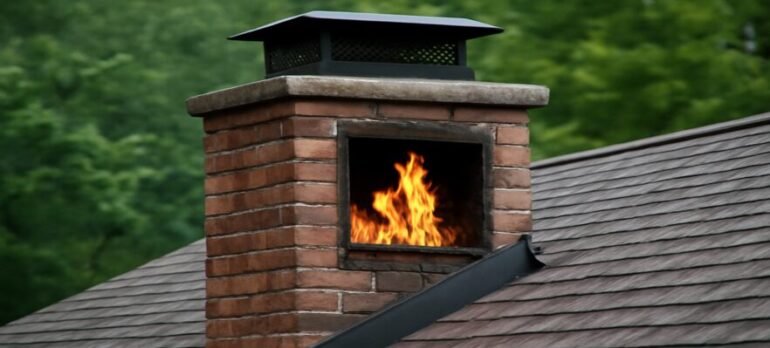
A fireplace adds warmth and comfort to your home, but without proper chimney maintenance, it can also become a serious safety risk. Regular chimney cleaning is critical, particularly in climates where dampness can accelerate creosote buildup. This guide will help you identify the key warning signs that your chimney needs attention, along with practical advice on what to do next.
1. Soot and Creosote Buildup
Every time you use your fireplace, soot and creosote accumulate inside the flue. Over time, this residue thickens, and if not cleaned, it becomes highly flammable.
What to watch for:
A black, sticky substance on the inner walls of your fireplace or chimney. If creosote buildup exceeds ¼ inch, it’s time to book a cleaning. Homes that clean their chimneys annually reduce the risk of chimney fire by 70% (National Fire Protection Association).
For peace of mind, consider booking a roof cleaning service before winter begins. Regular cleaning can significantly reduce fire risks and improve your chimney’s performance.
2. Smoke or Fumes Entering Your Home
If smoke starts backing up into your home when the fire is lit, something is wrong. It could be a soot blockage, an animal nest, or even damage inside the flue. Besides being a nuisance, this is also a health hazard — smoke carries harmful particles that can irritate lungs and trigger respiratory problems.
If you’re experiencing this issue, a roof repair service can quickly identify whether cleaning or repair is needed to restore airflow and safety.
3. Strong, Unpleasant Fireplace Odours
An off-putting smell coming from your fireplace — even when not in use — is another clear warning. This usually means creosote, moisture, or even mild mould has built up inside your chimney.
What does it smell like?
Musty, smoky, or damp odours. These smells often worsen in humid or rainy weather.
Addressing this early with a professional gutter cleaning service can eliminate the smell and reduce the risk of long-term water damage or decay.
4. Signs of Damage in Your Chimney Structure
Cracked flue tiles, rusted metal, or crumbling mortar can indicate that heat, creosote, or water damage is affecting the chimney’s structural integrity. Left unchecked, this can lead to costly repairs or even fire. Chimneys that aren’t cleaned regularly are three times more likely to suffer from structural cracks or corrosion (Chimney Safety Institute).
If you spot visible wear or deterioration, it’s time to arrange a roofing service and cleaning assessment to prevent the issue from escalating. The longer you wait, the more extensive (and costly) the repairs may become.
5. How Often Should You Clean Your Chimney?
Most homes should schedule a professional chimney cleaning at least once a year, especially if the fireplace is used frequently in colder months. Homes with older chimneys, high firewood use, or any past chimney issues may need more frequent checks.
A good rule of thumb is to book cleaning just before winter, when chimney use increases. This ensures your fireplace is ready to go when the temperatures drop.
6. Why Professional Chimney Cleaning Is Worth It
Cleaning a chimney isn’t just about removing soot — it’s about doing it safely, thoroughly, and without damaging your flue or fireplace. Professionals come with proper tools, training, and safety protocols to detect early problems and reduce risks. DIY chimney cleaning can miss dangerous creosote pockets or even worsen airflow problems if done incorrectly.
Trusting a qualified team ensures your chimney is clean, efficient, and hazard-free, protecting your home from potential fires or long-term damage.
Conclusion
Ignoring chimney maintenance can lead to smoke damage, poor airflow, structural issues, and even house fires. By learning the signs and scheduling professional care, you’ll keep your home safer and more comfortable year-round.
Contact Quik Solutions today to book professional chimney cleaning and ensure your fireplace is ready for the season.


